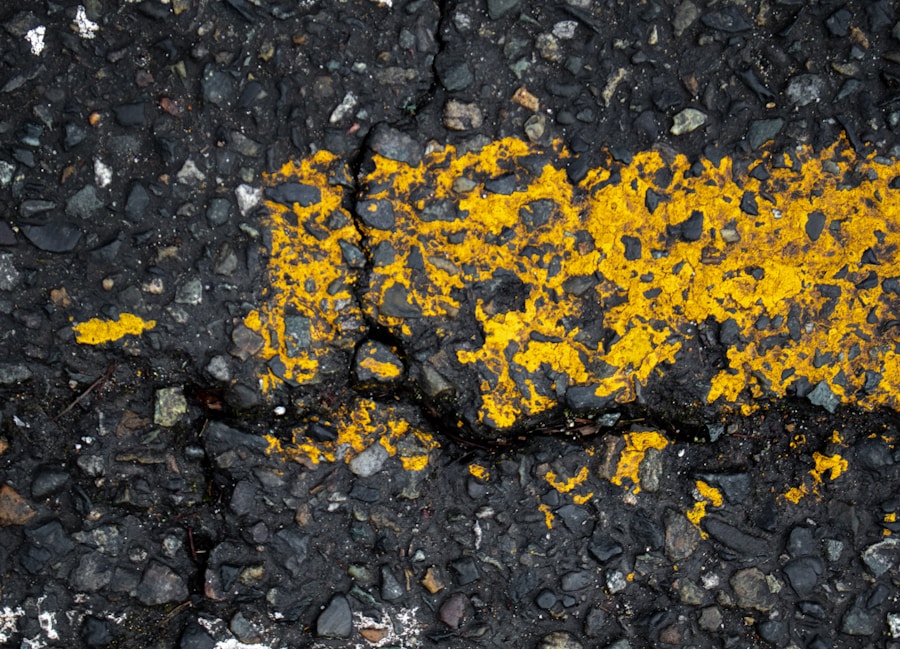Parking lots are an essential part of any business or commercial property, providing a safe and convenient place for customers and employees to park their vehicles. However, poor pavement conditions can have a significant impact on the functionality and safety of parking lots. Cracked, uneven, or deteriorating pavement can create hazards for pedestrians and vehicles, leading to accidents and injuries. In addition, poor pavement can also detract from the overall appearance of a property, giving a negative impression to visitors and potential customers.
Furthermore, poor pavement can also result in increased maintenance costs for property owners. Potholes and cracks can worsen over time, leading to more extensive and costly repairs. In extreme cases, the entire parking lot may need to be resurfaced or replaced, resulting in significant financial burden. Additionally, poor pavement can also lead to drainage issues, causing water to pool and potentially damage vehicles or create slippery conditions. Overall, the impact of poor pavement on parking lots can be far-reaching, affecting safety, aesthetics, and financial considerations.
Common Causes of Pavement Cracks in Parking Lots
There are several common causes of pavement cracks in parking lots, many of which are related to environmental factors and wear and tear. One of the primary causes is the freeze-thaw cycle, where water seeps into the pavement and expands as it freezes, causing cracks to form. Additionally, heavy vehicles and constant traffic can put stress on the pavement, leading to cracks and deterioration over time. Poor construction or substandard materials can also contribute to pavement issues, as can inadequate drainage systems that allow water to accumulate and weaken the pavement.
Furthermore, vegetation growth can also be a contributing factor to pavement cracks, as roots from nearby trees or plants can push up against the pavement, causing it to crack and become uneven. Finally, regular wear and tear from everyday use can also lead to pavement cracks, especially in high-traffic areas. Understanding the common causes of pavement cracks in parking lots is essential for property owners and managers to address these issues effectively and prevent further damage.
The Dangers of Neglecting Pavement Maintenance
Neglecting pavement maintenance in parking lots can have serious consequences for property owners and managers. One of the most significant dangers is the increased risk of accidents and injuries due to uneven or deteriorating pavement. Cracks and potholes can create tripping hazards for pedestrians and cause damage to vehicles, leading to potential liability issues for property owners. In addition, neglecting pavement maintenance can also result in decreased property value and a negative impact on the overall appearance of a property.
Furthermore, neglecting pavement maintenance can lead to more extensive and costly repairs in the long run. Small cracks and potholes can worsen over time if left unaddressed, leading to more significant damage that requires extensive repairs or even complete replacement of the pavement. This can result in significant financial burden for property owners and managers. Overall, neglecting pavement maintenance in parking lots can lead to a range of dangers and negative consequences that can be avoided with proactive maintenance and repairs.
Understanding the Legal and Financial Risks of Poor Pavement
Property owners and managers must understand the legal and financial risks associated with poor pavement in parking lots. From a legal perspective, neglecting pavement maintenance can lead to potential liability issues if accidents or injuries occur due to hazardous conditions. Property owners have a duty of care to maintain safe premises for visitors and customers, and poor pavement conditions can result in legal claims and lawsuits if negligence is proven.
From a financial perspective, poor pavement can result in increased maintenance costs and decreased property value. Small cracks and potholes can worsen over time if left unaddressed, leading to more extensive and costly repairs or even complete replacement of the pavement. This can result in significant financial burden for property owners and managers. Additionally, neglecting pavement maintenance can also lead to decreased property value, as the overall appearance and functionality of the parking lot are compromised. Understanding the legal and financial risks of poor pavement is essential for property owners and managers to prioritize proactive maintenance and repairs.
The Importance of Regular Pavement Inspections and Repairs
Regular pavement inspections and repairs are essential for maintaining safe and functional parking lots. By conducting regular inspections, property owners and managers can identify potential issues early on and address them before they worsen. This proactive approach can help prevent accidents and injuries due to hazardous pavement conditions, as well as minimize the risk of potential liability issues.
In addition, regular pavement repairs can help extend the lifespan of the pavement and prevent more extensive and costly repairs in the long run. Small cracks and potholes can be addressed promptly, preventing them from worsening over time and requiring more extensive repairs or complete replacement of the pavement. By investing in regular inspections and repairs, property owners and managers can also maintain the overall appearance and value of their property, creating a positive impression for visitors and customers.
How to Address Pavement Issues and Prevent Claims
Addressing pavement issues promptly is essential for preventing accidents, injuries, and potential liability claims. Property owners and managers should prioritize regular inspections to identify any potential issues with the pavement, such as cracks, potholes, or uneven surfaces. Once identified, these issues should be addressed promptly through professional repairs or resurfacing to prevent them from worsening over time.
In addition to addressing existing pavement issues, property owners should also take proactive measures to prevent future problems. This may include implementing proper drainage systems to prevent water accumulation, removing vegetation that could damage the pavement, or using high-quality materials for construction or repairs. By taking a proactive approach to addressing pavement issues and preventing claims, property owners can minimize the risk of accidents and injuries while maintaining a safe and functional parking lot.
The Benefits of Investing in Quality Pavement Maintenance
Investing in quality pavement maintenance offers a range of benefits for property owners and managers. By prioritizing regular inspections and repairs, property owners can maintain safe premises for visitors and customers, minimizing the risk of accidents and injuries due to hazardous pavement conditions. This proactive approach can also help prevent potential liability claims by demonstrating a commitment to maintaining safe premises.
Furthermore, investing in quality pavement maintenance can also help extend the lifespan of the pavement and prevent more extensive and costly repairs in the long run. By addressing small cracks and potholes promptly, property owners can avoid the need for complete replacement of the pavement, saving significant costs in the long run. Additionally, maintaining well-kept parking lots can also enhance the overall appearance and value of a property, creating a positive impression for visitors and customers.
In conclusion, poor pavement conditions in parking lots can have far-reaching impacts on safety, aesthetics, legal liability, and financial considerations for property owners and managers. Understanding the common causes of pavement cracks, as well as the dangers of neglecting maintenance, is essential for addressing these issues effectively. By prioritizing regular inspections, proactive repairs, and investing in quality maintenance, property owners can maintain safe premises while minimizing potential risks and liabilities associated with poor pavement conditions.

